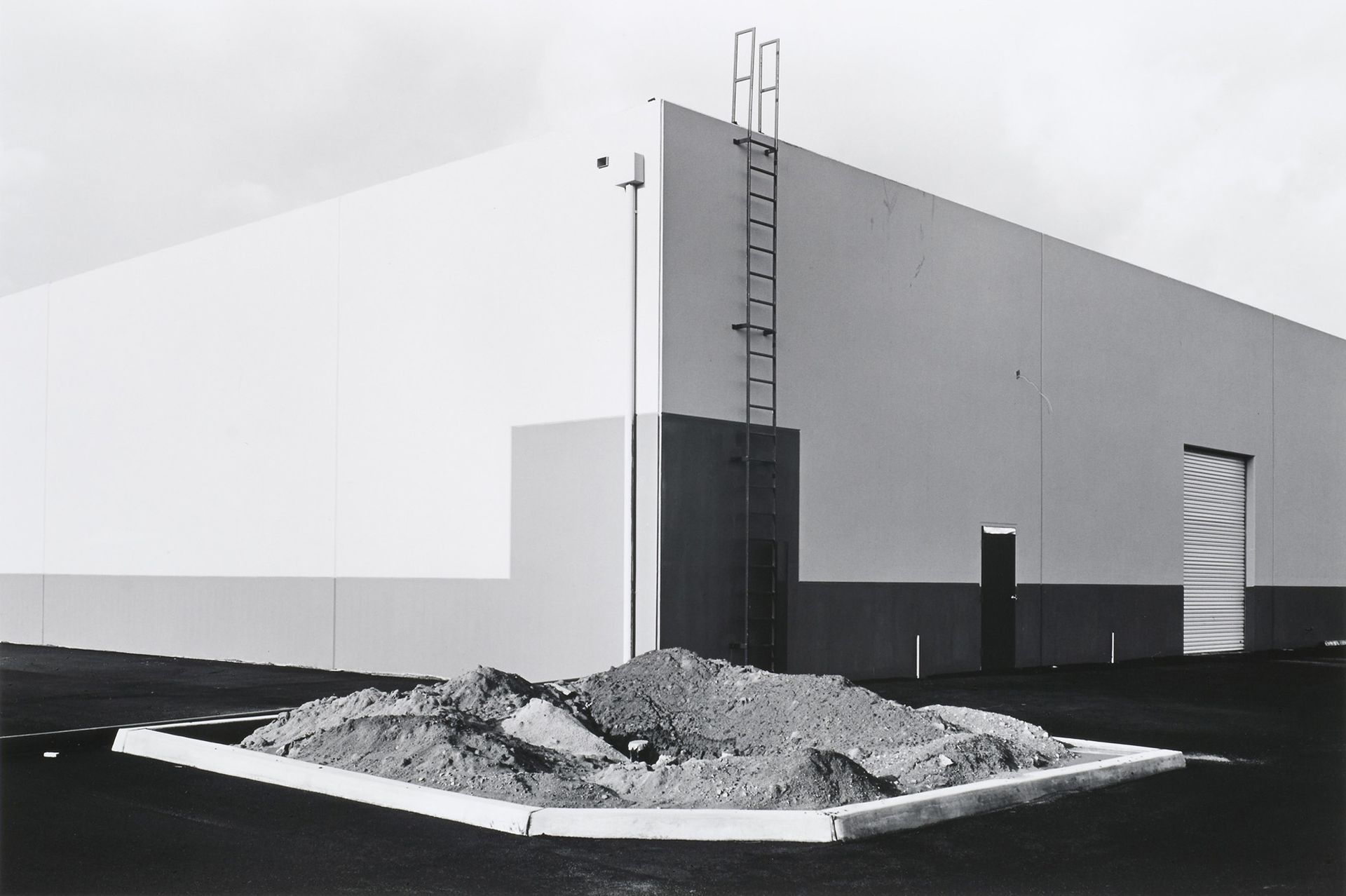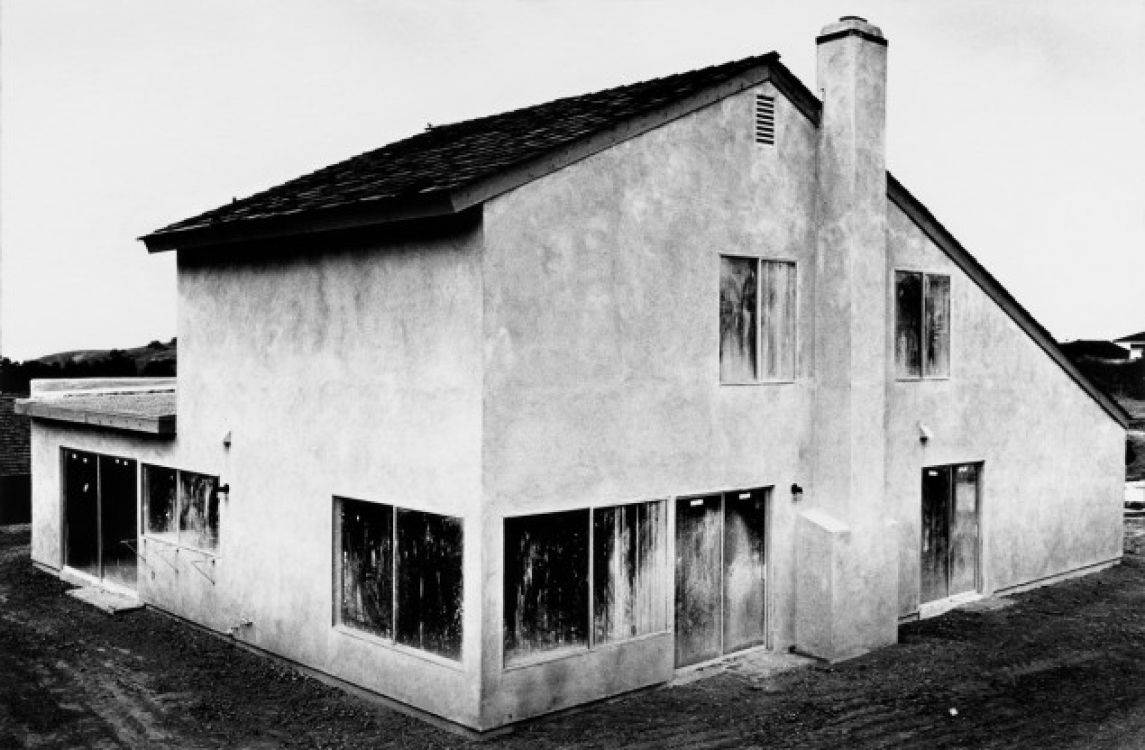“For me the word ‘photographer’ talks about the means of delivering certain kinds of information, feelings and such. If you’re consistently focused on the means of delivery, it means you’re not getting the message across very clearly.” – John Gossage
Interview by Monte Packham
Lewis Baltz and John Gossage depict man’s contentious impact on the American landscape with more eloquence and consistency than any other photographers of their generation. (That said, Robert Adams is at least their equal.)
Baltz, born in 1945 in Newport Beach, California, is deservedly best known for his pictures of industrialised Californian landscapes of the 1960s and ’70s. These images of nondescript tract houses, warehouses, offices and parking lots are without colour, without people, without sentiment. They are clinical, disenchanting, and coolly seductive.
Gossage, born in 1946 on Staten Island, describes himself as a chronicler of ‘stuff, whatever gets in the way’. This stuff is the residue of human ‘progress’ and includes derelict tracts of land, graffiti, the Berlin Wall, and squatters’ houses. Gossage’s most ambiguous and poignant body of work depicts a neglected pond behind a shopping mall in Queenstown Maryland, and comprises his seminal 1985 book The Pond.
At 6:34 pm on Monday 12 April, 2010, Baltz and Gossage are seated in the dining room of the printer and publisher Steidl in Göttingen, Germany. Göttingen, a charming town half way between Frankfurt and Hamburg is a mix of cobbled streets and discount bakeries in mediaeval buildings, and boasts a university where Bismarck studied law and the Brothers Grimm were professors. Baltz is at Steidl to print Works, ten volumes in a slipcase of his classic photography books. Gossage has come to print The Thirty-Two Inch Ruler / The Map of Babylon, a book including beautiful, unsettling images of his affluent neighbourhood in Washington D.C., and his first in colour.
Baltz wears a black suit and a black T-shirt. He has a round slightly blushed face and thin eyelids. He looks weary and kind, and has mellifluous voice. Gossage wears black pants and a pale striped shirt. He is like a sprite: short, excitable, erratic. The creases in his forehead rise and fall as he talks, gauging his excitement.
As Baltz and Gossage converse, they enjoy a shared sense of irony that belies the seriousness of their art.
LEWIS BALTZ: I think in one respect John and I do share a single attitude: when you’re dealing with a subject that’s so vital to human well-being as art, then you’re obliged to be as funny as possible.
MONTE PACKHAM: Why so?
LB: Because otherwise it’d just be too boring. [Gossage laughs]
MP: I’ve heard you don’t even like to consider yourself a ‘photographer’ though, is that true?
LB: I prefer not to, no. I think being a photographer is a little like being a whore: if you’re really really good at it, nobody will call you that.
MP: [to Gossage] Do you agree?
LB: He certainly does not!
JOHN GOSSAGE: I prefer to do it this way. [removes a battered business card from his wallet]

@ John Gossage
MP: ‘Precision Oculism’?
JG: Yes, I make eyeglasses for the exceedingly demanding.
MP: So you’re not quite comfortable being called a photographer either?
JG: For me the word ‘photographer’ talks about the means of delivering certain kinds of information, feelings and such. If you’re consistently focused on the means of delivery, it means you’re not getting the message across very clearly.
LB: That’s very well put. [Gossage laughs]
MP: But there must have been a point for the both of you when you said, ‘This is it, this is the medium I want to use,’ as opposed to a paintbrush or pencil.
JG: True.
MP: And was that because photography held a particular attraction, or did you fall into it?
JG: Total lack of ability to do anything else! I can’t draw, I don’t write, I don’t dance.
LB: You write OK.
JG: Thank you, but you’re an audience of one.
LB: He’s a very bad dancer, I’m told.
JG: I’m a terrible dancer. It’s exceedingly painful for me to write, I have a kind of dyslexia that makes it phenomenally difficult. I’ve written a few things in my own idiosyncratic manner whenever I thought it was important to do so, but I find it very difficult. I did play music though, which I still do as a hobby – and I photograph.
MP: So back then was it a matter of searching out a medium, or did you simply fall into photography?
JG: It started when I was eleven so the idea of choosing a medium didn’t really come into it. I got my first professional job when I was fourteen. An idiot child, poorly educated! I could just do one thing well so I did it a lot. [laughs] Plus you could flatter female acquaintances by saying, ‘You know, we could make a really beautiful picture if you just take off your top…’
LB: Actually one of my closest friends – I guess I shouldn’t name him but I taught him years ago in San Francisco – he was explaining the facts of life to his then teenage son, and confessed that everything he ever did in his entire life up until the age of about forty was simply calculated to attract sexual partners. [Gossage laughs]
MP: And then he stuck with one?
LB: No, then he just spent most of his time trying to attract sexual partners. [laughs] I thought that was really honest.
JG: But seriously, I remember the years I spent in New York when I was very young. I saw a lot of paintings by pre-Pop people like Rauschenberg and then Warhol and Lichtenstein – they were at the beginnings of their careers and it all seemed perfectly plausible. I felt there was nothing I was going to be able to add to that, and at the time it seemed to a lot of people like the end of a certain kind of painting – who obviously ended up being wrong.
LB: Not a hundred percent wrong.
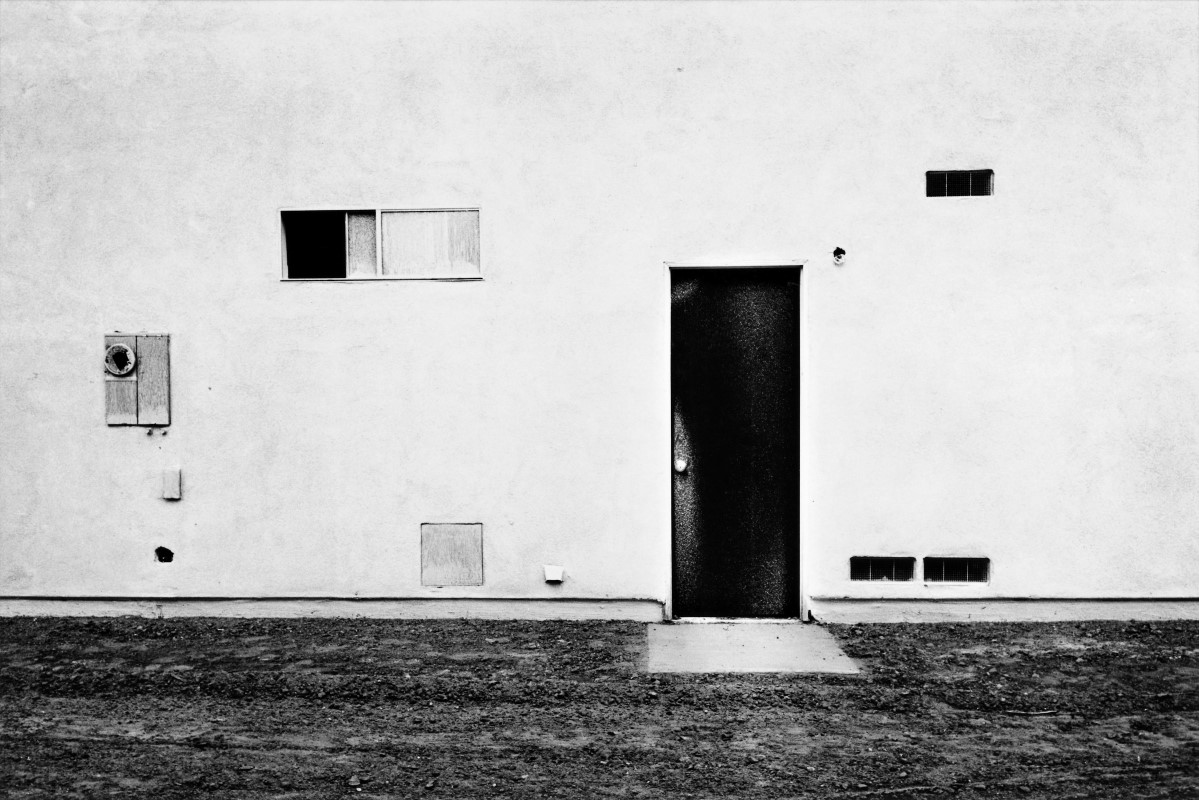
@ Lewis Baltz
“But painting didn’t seem to offer me any opportunities, it didn’t push me to try and acquire the skills to do it well.” – John Gossage
JG: But painting didn’t seem to offer me any opportunities, it didn’t push me to try and acquire the skills to do it well. And I never considered working in sculpture. I did think about wanting to become a painter, but it seemed closed off to me.
MP: [to Baltz] Was your decision to go with photography similar?
LB: I remember being fascinated by painting when I was about fourteen, I used to buy art books and read them.
MP: What kind of painting?
LB: Modernist, contemporary. I never really developed a huge appetite for dead white European males’ art until I’m almost one myself – so until fairly recently. But I loved contemporary painting and sculpture. Much in the same way I like music but it would never occur to me to try and do it myself. When I had to paint at art school I hated it. I loved going to exhibitions but as an activity it was something I really detested. Plus it’s very dirty.
“Photography was much more remote and cold and clean. Actually, if I could have been what I really wanted to be, I’d have been Antonioni.” – Lewis Baltz
JG: Yes!
LB: You can’t avoid smelling like white spirit. Photography was much more remote and cold and clean. Actually, if I could have been what I really wanted to be, I’d have been Antonioni. But I wasn’t. Cinema really appealed to me but I could never figure out even to begin how to learn to do it.
JG: I actually almost went to film school myself, I was offered the chance to study at Harvard.
LB: Well you really blew it.
JG: I know. [laughs] I went to a strange school but some of the feeder schools that came out of it were very good and wanted unusual students: Harvard, Princeton, Antioch… Harvard and Princeton decided they were interested in me and were even prepared to give me tutors to deal with my writing difficulties and such.
LB: You were like a basketball star!
JG: I know! They even said after the first year I’d be able to attend a graduate filmmaking course with Ricky Leacock.
“Cinema really appealed to me but I could never figure out even to begin how to learn to do it.” – Lewis Baltz
LB: That would have been pretty interesting.
JG: But I knew I was going to accumulate a great deal of debt even with the loans and scholarships. Plus I’d just gotten out of a whole cycle of failure with my writing and it seemed I was going to head straight into that storm again. Eventually I postponed it for a year and reapplied, but by then the student riots had happened at Berkeley and places and they didn’t think unusual students were that interesting anymore. So in the end I didn’t go. But yes, the only medium that seemed to offer considerable
opportunities for me apart from still photography was cinema.
LB: I think cinema was the greatest art of the twentieth century.
JG: Absolutely. It offers all the narrative possibilities of the novel, it offers visuals, and it offers things that neither of them offer. Plus it’s damn entertaining: people sit there in the dark and watch it in groups.
LB: It’s like opera two hundred years ago, it has everything. It’s high art that’s enormously popular. No other art medium in my lifetime can make that claim. All the art we like ends up being very much an affair for specialists, although it doesn’t necessarily want or try to be. I wouldn’t say it’s elitist because that implies you’re trying to exclude people and actually we all constantly try to bring people in, but it usually doesn’t work.

@ John Gossage
“Well I’m not interested in the kind of storyboard ‘people story’. I think cinema does that so much better: it talks, words actually come out of people’s mouths.” – John Gossage
JG: They don’t want to come. [laughs]
LB: Somehow cinema has a way of appealing to lots of people and also being intelligent and beautiful and critical – sometimes all in the same piece of cinema. There’re different types and levels of cinema but in many instances they seem to overlap: cinema crosses audiences more so than other media.
JG: I don’t think either of us would have had the actual skills needed to operate as a director in the systems available though, the industry wouldn’t have suited us.
LB: If I’d have gone into cinema I’d most likely have been a total failure.
JG: I don’t think I have the skills to accommodate the large groups of people that need to be ordered about – the deals that have to be made to get the thing moving, the funding…
LB: It’s like being the general of a small army and organizing all these people – from financiers, to the unions, to actors – and then getting them all to pull in your direction so that somehow you emerge as an author. It’s quite a trick. Hitchcock was widely experienced, enormously gifted and no slouch but he struggled with this all his life.
JG: Even the best of them have the same problems. Luckily we’ve both been able to make all the decisions ourselves.
LB: It was an individual art, like poetry – except of course poetry’s for girls. [Gossage laughs]
MP: [to Gossage] You praise cinema for having the capacity for storytelling, but when I look at your work storytelling doesn’t spring to mind.
JG: Well I’m not interested in the kind of storyboard ‘people story’. I think cinema does that so much better: it talks, words actually come out of people’s mouths. I’m more interested in narrative in relation to the kind of things I photograph, things that almost can’t be called narrative. I often describe my first book The Pond as ‘narrative landscape’: you step off the pavement into the unpaved area, you wander around a bit and then you go home. I think simple stories are sometimes more seductive than complicated ones which can get lost. The running order of a number of projects I’ve done is virtually narrative: you start here and you end here and certain things happen in between.
LB: But it’s never one incident. Not like in Jeff Wall where there’s a definite narrative incident.
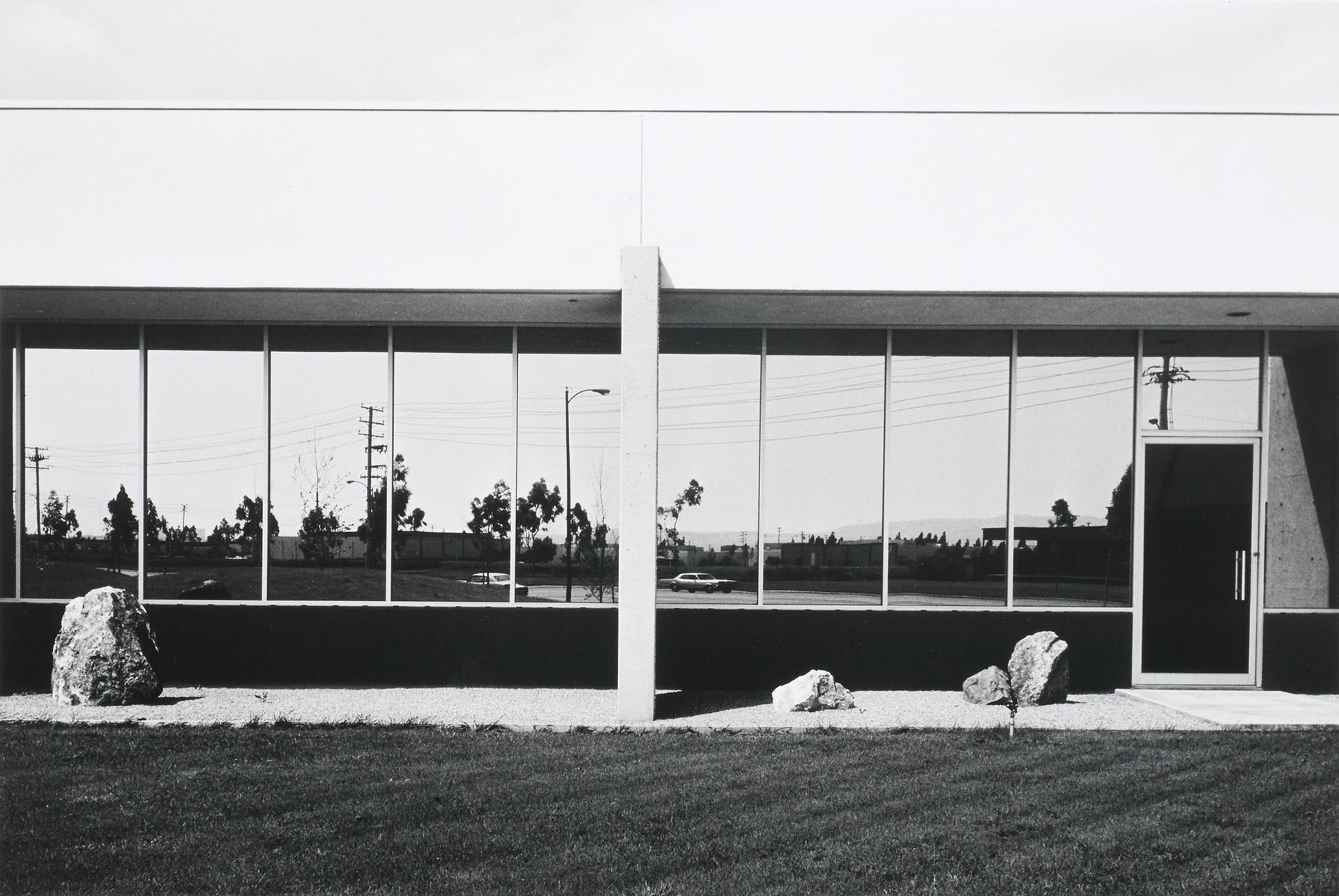
“The intellectual or imaginative engagement of the viewer is what makes the work finally a work.” – Lewis Baltz
JG: No.
LB: An incident which is sometimes brilliant, actually probably more often than not. But it’s a narrative incident and you can construct a fantasy over one particular moment Wall’s created. What we do is much lower intensity.
JG: Yes.
LB: Our work is like a military strike in low-intensity warfare – it’s not a missile attack but a long, grinding civil war.
JG: With the occasional IEDs which you don’t see until you’ve stepped on them. But unlike Jeff Wall, one thing I’m very sparing with is photographing people. Once you insert a person into the work, he or she become the protagonist and a lot of my books are at such low intensity that it throws everything off. I want the viewer to be the protagonist in the book. Like in The Thirty-Two Inch Ruler – no people occur except for the viewer.
LB: I think this is one thing we have in common: that the subject of the work is the person looking at it. If you want to get a little more Zen about it, the subject is necessary for the completion of the work.
JG: Yes.
LB: And the intellectual or imaginative engagement of the viewer is what makes the work finally a work. And if you interpose another human in the work, then he or she becomes the subject, which I think is too simplistic.
JG: I think it’s to be used incredibly sparingly and delicately.
MP: Do you see yourselves as the first protagonists when you take photos, so that you are actually the subjects of the work?
JG: No. The work isn’t autobiographical, at least not intentionally.
LB: That’s another ‘chasing the tail’ thing. In a sense everything you do is autobiographical, even the decision to be objective is subjective and so on. But if you place us next to any kind of work that’s ‘subjective’ or ‘autobiographical’ you see immediately that we’re not about that. It’s not about our journeys through the world; it’s about a universe we’re trying to look into.
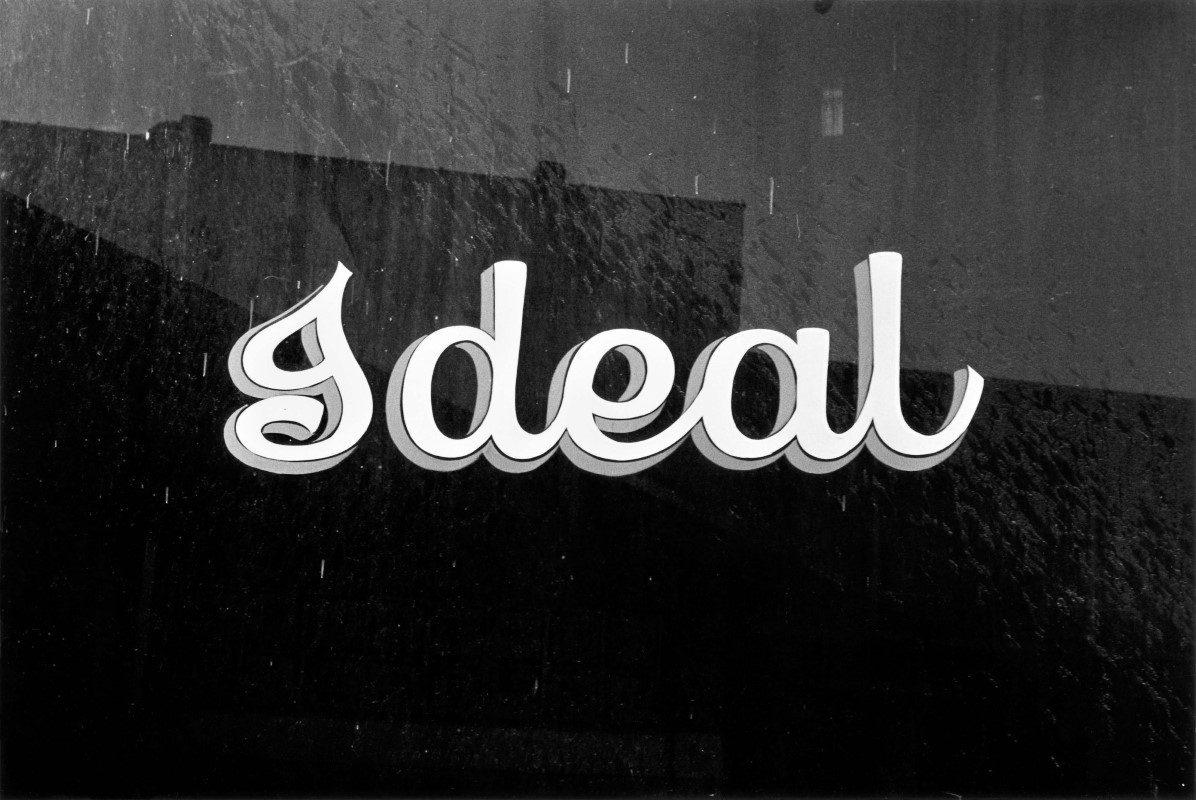
@ Lewis Baltz
JG: Obviously no matter now objective we try to be, everything we do is based on subjective and stylistic choices of how we present things. There’s a great quote by Frank Stella from an early exhibition catalogue. He’s describing exactly how he creates the black paintings and the thought-processes behind them and says, ‘Then I just stood back and looked at it and it worked.’ Sometimes that’s all there is to it – the recognition that a work looks like something I made.
LB: It’s a complicated question because photography is representation. It’s a kind of naming which somewhat functions within a linguistic model. At the same time it’s not wholly linguistic because – and that’s what makes a medium a medium – photography allows you to create things you can’t do or say in other media. So photography isn’t wholly a linguistic model any more than you’d say music is an architectural model. Photography has its own method of treating the world and its own method of being the kind of object it produces. It can’t be duplicated by some other medium or ‘form of expression’ (I hate that expression).
JG: I remember back in the seventies seeing a lecture by a fairly intelligent photographer who was asked to explain his work. ‘You want me to explain what it’s about?’ he says. Then he says nothing and just points to the picture because any verbal explanation would bring in other explanations that wouldn’t do justice to the work.
LB: It’s a smart-arse way of dealing with information and you can say a lot of things, but at the end of the day the bottom line is correct: photography is what it is, just like painting is what it is.
JG: One thing I find incredibly satisfying about photography, just personally, is that it allows me to say a great many complex and often contradictory things in virtually a single moment. I’m not very well indoctrinated by outside philosophies, religions and conduct, but the ability to make very quickly an object that encompasses all of this suits my temperament. I quite enjoy photographing.
LB: I remember in the seventies and eighties people used to ask, ‘Is this formal?’, ‘Is this documentary?’ – all a very strident discourse and really vulgar. Then somebody discovered that actually it can be both, and I don’t mean that in a spiritual or lazy way. You can play a lot of games and maybe you can even win at many in one work. Of course a work can’t be literally anything, but things can have a multiplicity of meanings and a multiplicity of attachments.
JG: I guess that’s my worldview. I feel I can photograph almost anything anywhere now. It’s like Martin Parr: drop him anywhere and he’ll shoot a few rolls of films and come back with a book.
LB: Many photographers have developed signature styles they can impose on any situation.
JG: Lee Friedlander for example: he always puts something in the light.
Now, tired, Baltz and Gossage decide to leave for the night. Gossage says, ‘I think we should allow the people that we’re going to dinner with, to actually go to dinner with us.’ They will dine with other Steidl guests at an Italian restaurant. ‘If this ever gets transcribed,’ says Baltz as he departs, ‘I’d be very curious if any of the irony or sarcasm or attempted wit actually comes across.’
Interview in French:
http://deslivresetdesphotos.blog.lemonde.fr/2011/03/04/une-conversation-avec-lewis-baltz-et-john-gossage/
http://www.steidlville.com
Works.
Photographs by Lewis Baltz.
Steidl, 2010. Unpaged, 9 volumes, quadratone illustrations throughout, slipcased, 11×10½”.
The Thirty-Two Inch Ruler / Map Of Babylon.
Photographs by John Gossage.
Steidl, 2010. 240 pp., 216 color illustrations in two volumes., 9¼x11¼”.
(Text © Monte Packham / Steidl. All images © copyright Lewis Baltz, John Gossage, Steidl. All rights reserved.)

